RBS 2010 Annual Report Download - page 150
Download and view the complete annual report
Please find page 150 of the 2010 RBS annual report below. You can navigate through the pages in the report by either clicking on the pages listed below, or by using the keyword search tool below to find specific information within the annual report.-
 1
1 -
 2
2 -
 3
3 -
 4
4 -
 5
5 -
 6
6 -
 7
7 -
 8
8 -
 9
9 -
 10
10 -
 11
11 -
 12
12 -
 13
13 -
 14
14 -
 15
15 -
 16
16 -
 17
17 -
 18
18 -
 19
19 -
 20
20 -
 21
21 -
 22
22 -
 23
23 -
 24
24 -
 25
25 -
 26
26 -
 27
27 -
 28
28 -
 29
29 -
 30
30 -
 31
31 -
 32
32 -
 33
33 -
 34
34 -
 35
35 -
 36
36 -
 37
37 -
 38
38 -
 39
39 -
 40
40 -
 41
41 -
 42
42 -
 43
43 -
 44
44 -
 45
45 -
 46
46 -
 47
47 -
 48
48 -
 49
49 -
 50
50 -
 51
51 -
 52
52 -
 53
53 -
 54
54 -
 55
55 -
 56
56 -
 57
57 -
 58
58 -
 59
59 -
 60
60 -
 61
61 -
 62
62 -
 63
63 -
 64
64 -
 65
65 -
 66
66 -
 67
67 -
 68
68 -
 69
69 -
 70
70 -
 71
71 -
 72
72 -
 73
73 -
 74
74 -
 75
75 -
 76
76 -
 77
77 -
 78
78 -
 79
79 -
 80
80 -
 81
81 -
 82
82 -
 83
83 -
 84
84 -
 85
85 -
 86
86 -
 87
87 -
 88
88 -
 89
89 -
 90
90 -
 91
91 -
 92
92 -
 93
93 -
 94
94 -
 95
95 -
 96
96 -
 97
97 -
 98
98 -
 99
99 -
 100
100 -
 101
101 -
 102
102 -
 103
103 -
 104
104 -
 105
105 -
 106
106 -
 107
107 -
 108
108 -
 109
109 -
 110
110 -
 111
111 -
 112
112 -
 113
113 -
 114
114 -
 115
115 -
 116
116 -
 117
117 -
 118
118 -
 119
119 -
 120
120 -
 121
121 -
 122
122 -
 123
123 -
 124
124 -
 125
125 -
 126
126 -
 127
127 -
 128
128 -
 129
129 -
 130
130 -
 131
131 -
 132
132 -
 133
133 -
 134
134 -
 135
135 -
 136
136 -
 137
137 -
 138
138 -
 139
139 -
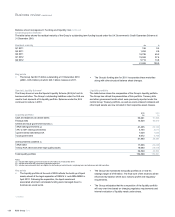 140
140 -
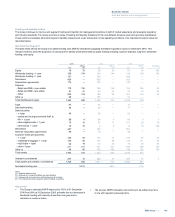 141
141 -
 142
142 -
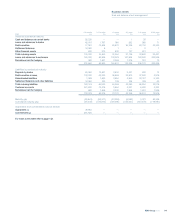 143
143 -
 144
144 -
 145
145 -
 146
146 -
 147
147 -
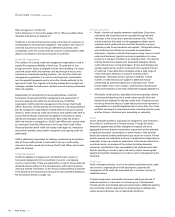 148
148 -
 149
149 -
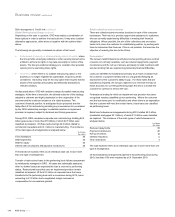 150
150 -
 151
151 -
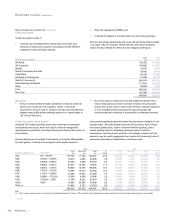 152
152 -
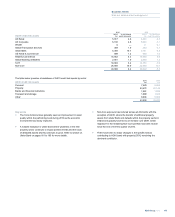 153
153 -
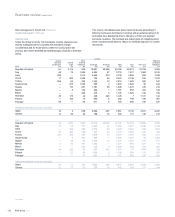 154
154 -
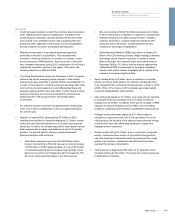 155
155 -
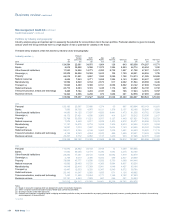 156
156 -
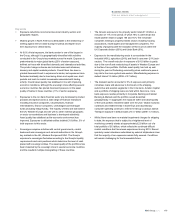 157
157 -
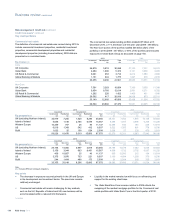 158
158 -
 159
159 -
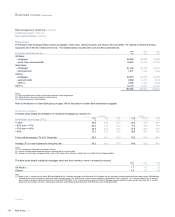 160
160 -
 161
161 -
 162
162 -
 163
163 -
 164
164 -
 165
165 -
 166
166 -
 167
167 -
 168
168 -
 169
169 -
 170
170 -
 171
171 -
 172
172 -
 173
173 -
 174
174 -
 175
175 -
 176
176 -
 177
177 -
 178
178 -
 179
179 -
 180
180 -
 181
181 -
 182
182 -
 183
183 -
 184
184 -
 185
185 -
 186
186 -
 187
187 -
 188
188 -
 189
189 -
 190
190 -
 191
191 -
 192
192 -
 193
193 -
 194
194 -
 195
195 -
 196
196 -
 197
197 -
 198
198 -
 199
199 -
 200
200 -
 201
201 -
 202
202 -
 203
203 -
 204
204 -
 205
205 -
 206
206 -
 207
207 -
 208
208 -
 209
209 -
 210
210 -
 211
211 -
 212
212 -
 213
213 -
 214
214 -
 215
215 -
 216
216 -
 217
217 -
 218
218 -
 219
219 -
 220
220 -
 221
221 -
 222
222 -
 223
223 -
 224
224 -
 225
225 -
 226
226 -
 227
227 -
 228
228 -
 229
229 -
 230
230 -
 231
231 -
 232
232 -
 233
233 -
 234
234 -
 235
235 -
 236
236 -
 237
237 -
 238
238 -
 239
239 -
 240
240 -
 241
241 -
 242
242 -
 243
243 -
 244
244 -
 245
245 -
 246
246 -
 247
247 -
 248
248 -
 249
249 -
 250
250 -
 251
251 -
 252
252 -
 253
253 -
 254
254 -
 255
255 -
 256
256 -
 257
257 -
 258
258 -
 259
259 -
 260
260 -
 261
261 -
 262
262 -
 263
263 -
 264
264 -
 265
265 -
 266
266 -
 267
267 -
 268
268 -
 269
269 -
 270
270 -
 271
271 -
 272
272 -
 273
273 -
 274
274 -
 275
275 -
 276
276 -
 277
277 -
 278
278 -
 279
279 -
 280
280 -
 281
281 -
 282
282 -
 283
283 -
 284
284 -
 285
285 -
 286
286 -
 287
287 -
 288
288 -
 289
289 -
 290
290 -
 291
291 -
 292
292 -
 293
293 -
 294
294 -
 295
295 -
 296
296 -
 297
297 -
 298
298 -
 299
299 -
 300
300 -
 301
301 -
 302
302 -
 303
303 -
 304
304 -
 305
305 -
 306
306 -
 307
307 -
 308
308 -
 309
309 -
 310
310 -
 311
311 -
 312
312 -
 313
313 -
 314
314 -
 315
315 -
 316
316 -
 317
317 -
 318
318 -
 319
319 -
 320
320 -
 321
321 -
 322
322 -
 323
323 -
 324
324 -
 325
325 -
 326
326 -
 327
327 -
 328
328 -
 329
329 -
 330
330 -
 331
331 -
 332
332 -
 333
333 -
 334
334 -
 335
335 -
 336
336 -
 337
337 -
 338
338 -
 339
339 -
 340
340 -
 341
341 -
 342
342 -
 343
343 -
 344
344 -
 345
345 -
 346
346 -
 347
347 -
 348
348 -
 349
349 -
 350
350 -
 351
351 -
 352
352 -
 353
353 -
 354
354 -
 355
355 -
 356
356 -
 357
357 -
 358
358 -
 359
359 -
 360
360 -
 361
361 -
 362
362 -
 363
363 -
 364
364 -
 365
365 -
 366
366 -
 367
367 -
 368
368 -
 369
369 -
 370
370 -
 371
371 -
 372
372 -
 373
373 -
 374
374 -
 375
375 -
 376
376 -
 377
377 -
 378
378 -
 379
379 -
 380
380 -
 381
381 -
 382
382 -
 383
383 -
 384
384 -
 385
385 -
 386
386 -
 387
387 -
 388
388 -
 389
389 -
 390
390 -
 391
391 -
 392
392 -
 393
393 -
 394
394 -
 395
395 -
 396
396 -
 397
397 -
 398
398 -
 399
399 -
 400
400 -
 401
401 -
 402
402 -
 403
403 -
 404
404 -
 405
405 -
 406
406 -
 407
407 -
 408
408 -
 409
409 -
 410
410 -
 411
411 -
 412
412 -
 413
413 -
 414
414 -
 415
415 -
 416
416 -
 417
417 -
 418
418 -
 419
419 -
 420
420 -
 421
421 -
 422
422 -
 423
423 -
 424
424 -
 425
425 -
 426
426 -
 427
427 -
 428
428 -
 429
429 -
 430
430 -
 431
431 -
 432
432 -
 433
433 -
 434
434 -
 435
435 -
 436
436 -
 437
437 -
 438
438 -
 439
439 -
 440
440 -
 441
441 -
 442
442 -
 443
443 -
 444
444 -
 445
445
 |
 |

Risk management: Credit risk continued
Global Restructuring Group continued
Depending on the case in question, GRG may employ a combination of
these options in order to achieve the best outcome. It may also consider
alternative approaches, either alone or together with the options listed
above.
The following are generally considered as options of last resort:
xEnforcement of security or otherwise taking control of assets: where
the Group holds underlying collateral or other security interest and is
entitled to enforce its rights, it may take ownership or control of the
assets. The Group’s preferred strategy is to consider other possible
options prior to exercising these rights.
xInsolvency: where there is no suitable restructuring option or the
business is no longer regarded as sustainable, insolvency will be
considered. Insolvency may be the only option that ensures that the
assets of the business are properly and efficiently distributed to
relevant creditors.
As discussed above, GRG will consider a range of possible restructuring
strategies. At the time of execution, the ultimate outcome of the strategy
adopted is unknown and highly dependent on the cooperation of the
borrower and the continued existence of a viable business. The
customer’s financial position, its anticipated future prospects and the
likely effect of the restructuring including any concessions are considered
by the GRG relationship manager to establish whether an impairment
provision is required, subject to divisional and Group governance.
During 2010, GRG completed corporate loan restructurings totalling £6.2
billion (exposures of more than £5 million) of which £2.7 billion were
classified as impaired. Of these restructurings £2.4 billion related to
commercial real estate and £2.1 billion to manufacturing. The incidence
of the main types of arrangements is analysed below:
%of loans
(by value)
Term extensions 54
Debt forgiveness 25
Debt for equity 23
Interest rate concessions and payment moratoriums 36
The total above exceeds 100% as an individual case can involve more
than one type of arrangement.
Transfer of restructured loans to the performing book follows assessment
by relationship managers in GRG. All cases are individually assessed;
when no further losses are expected the loan is returned to performing
status. Restructured loans that carry an impairment provision remain
classified as impaired. Of the £3.5 billion of corporate loans that were
transferred to the performing book with a concession during 2010, loans
amounting to £1.8 billion had a negotiated margin increase as
compensation for concessions granted.
Retail collections and recoveries
There are collections and recoveries functions in each of the consumer
businesses. Their role is to provide support and assistance to customers
who are currently experiencing difficulties in meeting their financial
obligations. Where possible, the aim of the collections and recoveries
teams is to return the customer to a satisfactory position, by working with
them to restructure their finances. If this is not possible, the team has the
objective of reducing the loss to the Group.
Forbearance*
The Group’s retail forbearance activities involve granting various contract
revisions not normally available, such as reduced repayments, payment
moratoriums and the roll up of arrears, principally to retail customers with
secured lending that are experiencing temporary financial difficulties.
Loans are identified for forbearance primarily as a result of contact from
the customer or payment arrears and it is only granted following an
assessment of the customer’s ability to pay. For those loans that are
classified as impaired, the Group’s objective is to minimise the loss on
these accounts; for currently performing loans the aim is to enable the
customer to continue to service the loan.
Forbearance lending for which an impairment loss provision has been
recognised remains classified as non-performing. Where the customer
met the loan terms prior to modification and where there is an expectation
that the customer will meet the revised terms, these loans are classified
as performing loans.
Retail loan forbearance arrangements during 2010 totalled £3.3 billion
(residential mortgages £3.1 billion), of which £1.0 billion were classified
as impaired. The incidence of the main types of retail forbearance is
analysed below.
%of loans
(by value)
Reduced repayments 59
Payment moratoriums 20
Roll up of arrears 19
Interest reductions 6
Term extensions 3
The total exceeds 100% as an individual case can involve more than one
type of arrangement.
Of the forbearance arrangements agreed in the performing book during
2010, less than 15% were impaired as at 31 December 2010.
*unaudited
RBS Group 2010148
Business review continued
